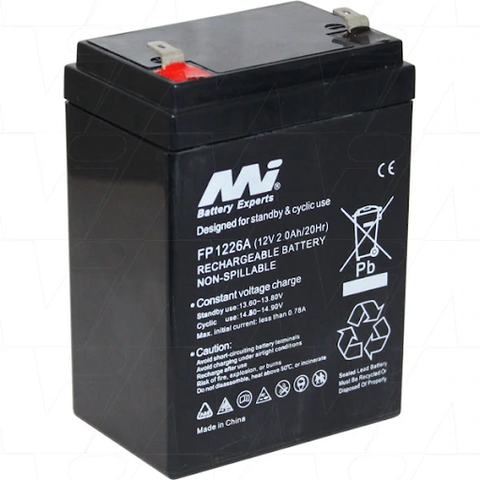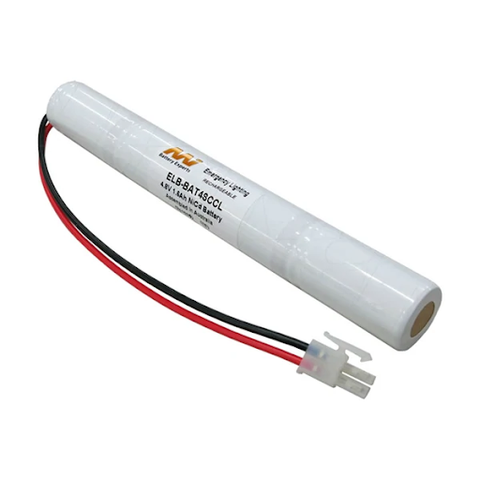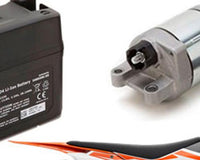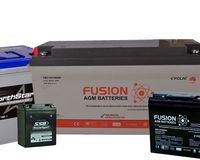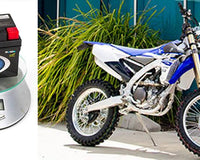Table of Contents
Emergency lighting is an essential part of the safety protocol of any building.
It’s designed to direct the occupants of a building if an emergency compromises the evacuation routes or when navigating the building becomes dangerous.
To ensure compliance with safety regulations, you need to have reliable emergency lighting batteries.

There are two types of emergency lighting batteries, namely sealed lead-acid emergency lighting batteries and nickel-cadmium emergency lighting batteries.
Even though they work in the same way, they’re manufactured differently and have different lifespans. We will discuss how these two types of batteries are made, how they function, and which one is best suited for your needs below.
Type 1: Sealed Lead Acid Batteries
Lead-acid batteries were the first type of emergency lighting batteries to be made.
In 1860, Gaston Planté came up with the first practical version of what we have now, and nearly a century later, sealed lead-acid batteries were developed.
The name lead-acid comes from the fact that these batteries contain lead alloy plates that are submerged in acid.
The acid in which these plates are immersed breaks them down, leading to a release of charged electrons that produce an electric current.
Early prototypes required regular refilling of the acid chamber. However, recent versions are fully sealed and don’t require any extra acid.
These are called sealed lead-acid batteries.
Sealed lead-acid batteries come in:
- 6V
- 12V
- 24V
These three options also come with different wattage capacities.
This means that there’s a combination to suit pretty much every need, and you can pick and choose one that will work best for your emergency lights.
Higher voltage batteries are made to be used with brighter lamps. They also work well if a remote lamp head is connected to an emergency lighting unit.
Lower voltage ones work better with smaller lamps.
If the wrong wattage and voltage batteries are used in a unit, this can damage the entire unit. If the battery voltage is too high, the lamp will be blown. Alternatively, if it’s too low, the lamp will be dim.
The Advantages and Disadvantages of Sealed Lead Acid Emergency Lighting Batteries
Below are some advantages and disadvantages of sealed lead-acid emergency batteries.
| Advantages | Disadvantages |
| Affordable | Bulky size |
| More resistant to extremes in temperature or overcharging | Usually heavy |
| Large current capacity | Need to be upright to function well |
| A diverse range of sizes and specifications available | Can get damaged by losing charge |
Lead-acid batteries are widely used in wet location emergency lights and emergency lights with steel housings. They're also the battery of choice for hazardous location emergency lights and inverter units emergency lighting.
They’re best suited for these locations for the following reasons:
- Lead-acid batteries have many amp-hours of stored capacity
- Lead-acid batteries have low up-front acquisition costs compared to nickel-cadmium batteries
- Lead-acid batteries are less likely to self-discharge
So, if you want to install emergency lights in any of the above-mentioned locations or if you want replacement batteries, lead-acid emergency lighting batteries will get the job done for you.
How to Maintain Sealed Lead-Acid Emergency Lighting Batteries
The great thing about using sealed lead-acid emergency lighting batteries is that they’re essentially maintenance-free.
All you need to do is just regularly check that they're working as they should.
Most standalone units have a test button that tests if the lamp and battery are in good working condition. Using this function monthly should be adequate.
Once a year, you need to do a more thorough test of your emergency lighting batteries. This involves removing the battery from the unit and testing its voltage.
It's important to note that when you’re checking any battery’s voltage, the measured voltage must be higher than that which is denoted on the battery.
For example, when testing a 12V battery, it's normal to get a reading above 13V.
Over time, the chemicals that are responsible for the production of an electric current in the battery gradually lose their potential. This translates to a reduction in the measured voltage.
Ultimately, when the measured voltage reading is almost equal to the stated one, it is a clear indicator that the battery is very close to the end of its lifespan and needs to be replaced.
Expert Tip: When you’re looking for a replacement battery for your emergency lighting, use the labels inside the housing unit for reference. If the specifications aren’t listed, use the existing batteries as your reference.
Type 2: Nickel-Cadmium Batteries
Nickel-Cadmium (Ni-Cad) batteries were first made by Waldemar Jungner in 1899.
At the time, refinements were slow because both metals were expensive. But by the 1940s, most portable devices (such as emergency medical equipment) used these types of batteries.
These Ni-Cad emergency lighting batteries are dry, rechargeable batteries. They’re referred to as dry because they don’t need liquid (acid) to produce an electric current.
Instead, they are made of two layers of metal that are separated by a non-conductive layer. This later insulates both layers of metal and causes them to react with each other magnetically.
This leads to the formation of charged electrons and, ultimately, an electric current.
The Advantages and Disadvantages of Ni-Cad Emergency Lighting Batteries
Below are some advantages and disadvantages of Ni-Cad emergency lighting batteries.
| Advantages | Disadvantages |
| High cycle count when properly maintained | Low specific energy when compared to other types of batteries |
| Can be charged ultra-fast | Has “memory effect” and thus needs to be fully charged before use or it won’t charge to full capacity on subsequent charges |
| Excellent load performance | Needs periodic full discharges |
| Can be stored while discharged with a long shelf life | High capacity for self-discharge |
| Simple to store and transport because of their small size | Has low cell voltage of 1.20V |
| Good performance at low temperatures | Requires several cells if a high voltage is needed |
| A diverse range of sizes and specifications available | Cadmium is toxic and hard to dispose of safely |
When in a thermoplastic housing, Ni-Cad batteries are found in emergency lights and indoor locations that aren’t exposed to wet conditions. They’re also used in explosion-proof emergency lighting units.
Ni-Cad batteries are well suited for use in these locations because they’re lightweight and efficient. The combination of many cells in one battery ensures that each battery can work for up to 90 minutes before losing charge.
How to Maintain Ni-Cad Batteries
Ni-Cad batteries are easy to maintain.
Most have a push to test function that’s used monthly to check if the lamp and the battery are working as they should.
When you press the ‘test’ button, this interrupts the power supply to the emergency lighting unit and mimics what would happen if there was a real power outage.
If the lamp turns on, then the system is working well and no further intervention is required until the next scheduled test date.
Once a year, you will need to cut off the power supply for a full 90 minutes to see how long the emergency battery lasts. And if it shuts down before the full time, it means the batteries need to be replaced.
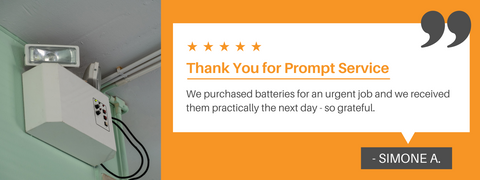
Good Quality Emergency Lighting Batteries
If you’re looking for good quality emergency lighting, look no further.
HBPlus Battery Specialists is your go-to place for:
- Batteries in bulk
- Batteries for use in different machines and gadgets
- Batteries for general day-to-day use
We fulfill all battery orders, no matter how small or big they are. Our services are quick and efficient, and we provide good quality batteries at very competitive prices.
At HBPlus Battery Specialists, we also design and distribute a wide selection of batteries.
If you’ve got batteries that need to be refurbished or repacked, visit our Carrum Downs warehouse in Victoria and we will get that done for you in the fastest time possible.


